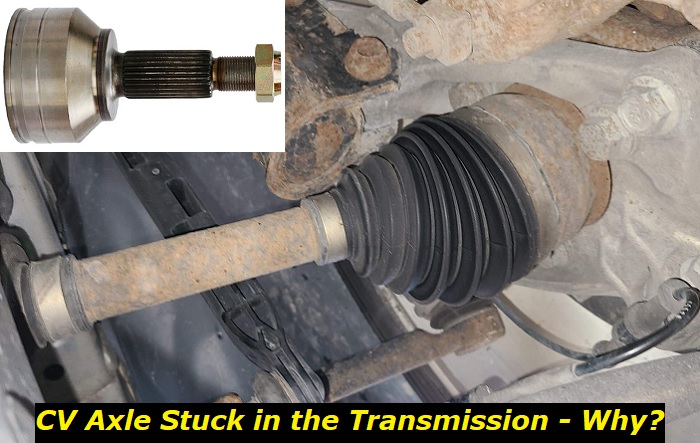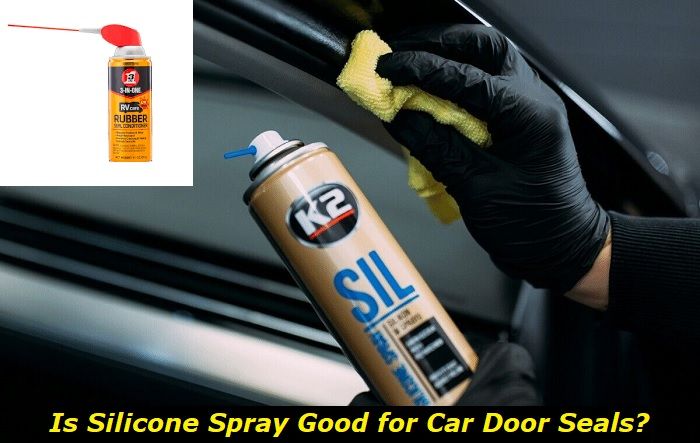The CV axle is an important component of a vehicle's suspension and steering system. However, there are times when it tends to get stuck in places where it shouldn't be. The most common of them are in the differential, hub, or transmission.
CV axle stuck problem highlights
- Level of importance:High
- Reasons:Damaged axle, wrong procedure
- Needed expertise:Medium
- Needed tools:Pry bar
- Time taken:0.5-1 hour
- Can you drive? No
- Possible issues: Transmission damage, CV axle damage, no way to finish repair.

How the CV Axle Works
The CV axle is a vital part of a car's suspension and steering system. It helps transfer power from the engine to the wheels. The CV axle is located in between the transmission and the wheels.
The CV axle consists of two parts, namely the inner shaft and the outer shaft. The inner shaft is connected to the transmission, while the outer shaft is connected to the wheel. The CV axle helps keep the wheels in contact with the ground while also providing a smooth and stable ride.
Symptoms of the CV Axle Getting Stuck in the Transmission
When a CV axle becomes stuck in the transmission system of a vehicle, there are several symptoms that may be experienced by the driver and the other occupants of the vehicle. Among the signs that you should pay attention to are the following:
- The vehicle may be unable to move, or may only be able to move very slowly.
- There may be a grinding noise or noticeable vibrations coming from the transmission area.
- The vehicle may jerk or lurch when trying to accelerate.
- The engine may rev but the vehicle does not move as quickly as it should.
If you notice any of these symptoms, it is important to have your vehicle checked by a mechanic as soon as possible to avoid further damage to the transmission or suspension system.
Reasons Why the CV Axle Can Get Stuck in the Transmission System
The CV axle can sometimes get damaged or stuck in the transmission. This can be caused by several factors, such as hitting a pothole or curb, or regularly driving on uneven terrain. Damaged or stuck CV axles can cause your car to lose power, or even stop working altogether.
If you suspect that your CV axle may be damaged, it is important to take your car to a mechanic as soon as possible so that they can inspect it and make any necessary repairs.
Ways to Get a Stuck CV Axle Out of the Transmission System
If you have a car with a stuck CV axle in the transmission, there are a few ways you can remove it. The method slightly varies depending on the design of the CV axle. What we will show you here are ways to do this for CV axles with roll pins and friction pins.
1. Removing a Stuck CV Axle with Roll Pins from the Transmission
If you have a stuck CV axle with roll pins, there are a few things you can do to try and remove it. First, make sure that the transmission is in neutral and the parking brake is engaged. Next, disconnect the negative battery cable. Once that is done, you will need to raise the vehicle and support it on jack stands. Now you can remove the wheels and tires.
Next, you will need to remove the caliper and rotor. To do this, start by removing the brake hose from the caliper by loosening the retaining clip. Then, remove the two bolts that hold the caliper in place and carefully pull it off of the rotor. Be careful not to damage the brake line when doing this.
Now you can remove the rotor. There are usually two bolts holding it in place, so simply remove those and pull the rotor off. With the rotor removed, you should now be able to see the CV axle.
There are a few ways to remove a stuck CV axle. One way is to use a hammer and punch to drive the roll pins out of the joint. Another way is to use an air chisel to cut through the roll pins. Either way, once the roll pins are removed, you should be able to pull the CV axle out of the transmission.
This method is relatively simple if you know your way around the basic parts of your auto and does not require any special tools or knowledge. However, this can entail hours of work, so if you are not comfortable with this, it is always best to take it to a professional mechanic.
2. Removing a Stuck CV Axle with Friction Pins from the Transmission
To remove a stuck CV axle with friction pins, simply follow the initial steps shown in the previous item. Along the way, locate the two friction pins in the transmission. These pins are located on either side of the CV axle shaft. Once you have located the pins, use a hammer to tap them out of their respective holes.
Next, use a pair of pliers to grasp the end of the CV axle shaft. Slowly and carefully pull the shaft out of the transmission. Be careful not to damage the seals or bearings as you remove the shaft.
Once the CV axle shaft is removed, you can now replace it with a new one. Simply reverse the process to install the new shaft. Make sure to properly lubricate the new shaft before installing it.
Again, it's always advisable to take your vehicle to a mechanic to do the repairs for you if you do not have the time and basic skills required for the job.
CV Axle Replacement Cost
Depending on the make and model of your vehicle, replacing a single axle can run anywhere from $300 to over $1,500 in total, including labor costs. You can multiply this rate by the number of axles you need to replace. The numbers also do not take into account any possible damages directly or indirectly caused by the issue to your transmission and other parts of the suspension system.
Tips on How to Take Care of Your Vehicle's CV Axle
As seen here, repairs or replacements involving the CV axle can be quite pricey. Add to that any potential issues it may cause to your transmission or suspension system and you may be in for a major headache. Therefore, as with any other parts of your auto, always pay attention to any potential troubles brewing in this area to avoid uneconomical repairs in the future.
Here are some essential steps that you should follow to ensure the longevity and functionality of this part:
- Make sure that you properly lubricate the CV axle before installing it. This will help keep the axle from getting stuck in the transmission.
- Make sure that you use the correct type of lubricant. Do not use grease, as this will not work well with the CV axle. Instead, use a silicone-based lubricant or a high-temperature grease.
- Always check your fluid levels and tire pressure regularly. This will help keep your car in good condition and prevent any unnecessary damage to the CV axle.
- Be careful when driving over bumps and potholes. This can cause damage to the CV axle and eventually lead to it getting stuck in the transmission.
- Have your car serviced and inspected regularly by a professional mechanic. This will help catch any issues with the CV axle before they become bigger problems.
- If you hear any strange noises coming from the CV axle, have it checked out as soon as possible. These noises could be an indication of a problem that needs to be fixed.
- If you notice any leaking fluids, have the car inspected immediately. This could be a signal of a serious problem with the CV axle or other parts of the suspension system.
- If you are not comfortable working on your car, it is always best to take it to a professional mechanic. They will be able to properly diagnose and fix any problems with the CV axle.
- Keep your tires properly inflated. This will help reduce the stress on the CV axle and prevent any damage to it.
- Follow the manufacturer's recommended maintenance schedule for your car. This will help ensure that your CV axle lasts as long as possible.
Conclusion
Having your CV axle stuck in your transmission can definitely spell a lot of trouble on your part. It will surely compromise the way you drive and the way that your vehicle performs. So, it's important for you to keep the things you learned here in mind to determine the factors that you should monitor to avoid more serious issues going forward.
About the authors
The CarAraC research team is composed of seasoned auto mechanics and automotive industry professionals, including individuals with advanced degrees and certifications in their field. Our team members boast prestigious credentials, reflecting their extensive knowledge and skills. These qualifications include: IMI: Institute of the Motor Industry, ASE-Certified Master Automobile Technicians; Coventry University, Graduate of MA in Automotive Journalism; Politecnico di Torino, Italy, MS Automotive Engineering; Ss. Cyril and Methodius University in Skopje, Mechanical University in Skopje; TOC Automotive College; DHA Suffa University, Department of Mechanical Engineering






Add comment